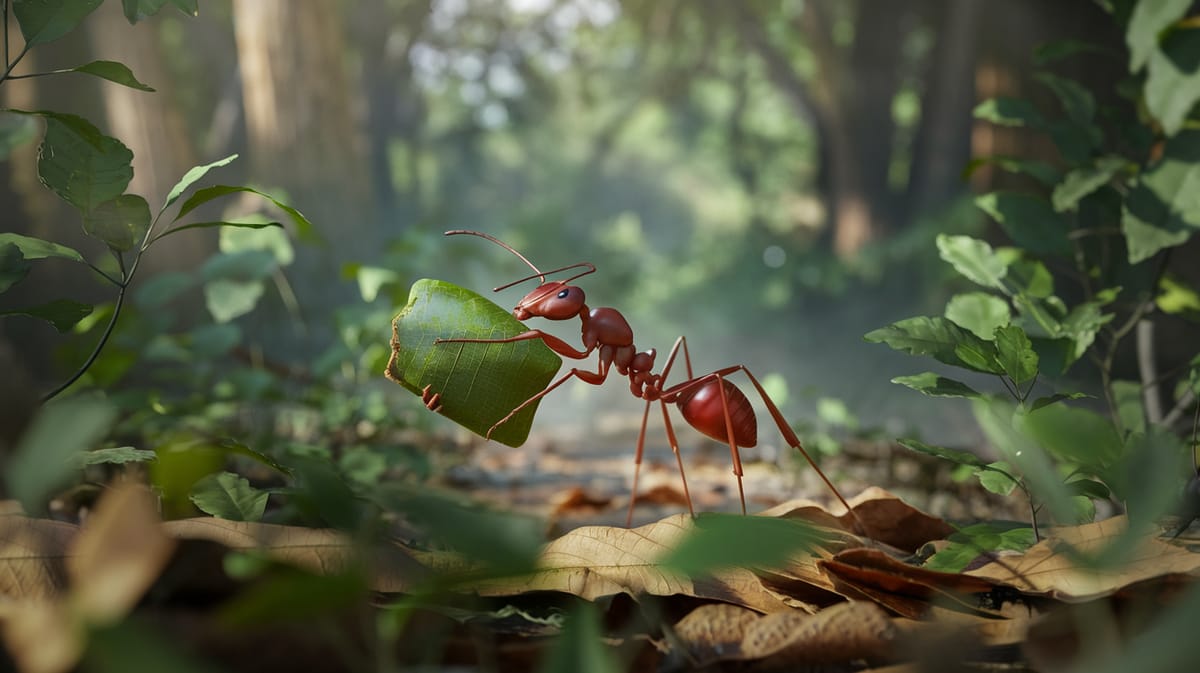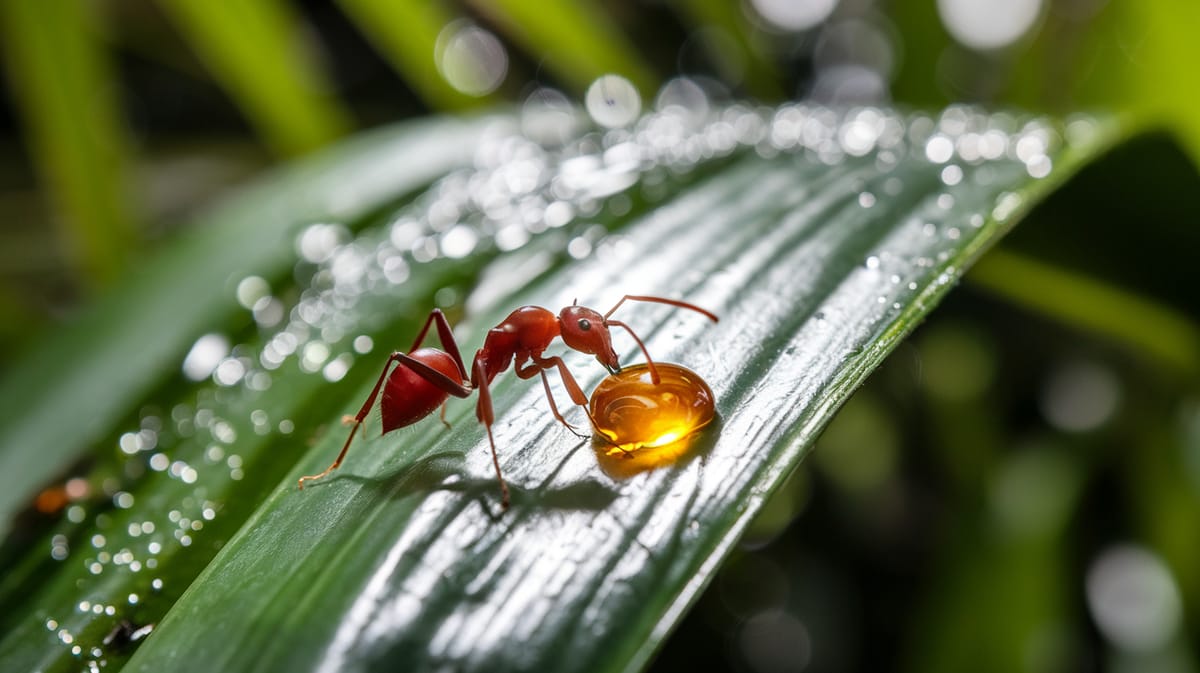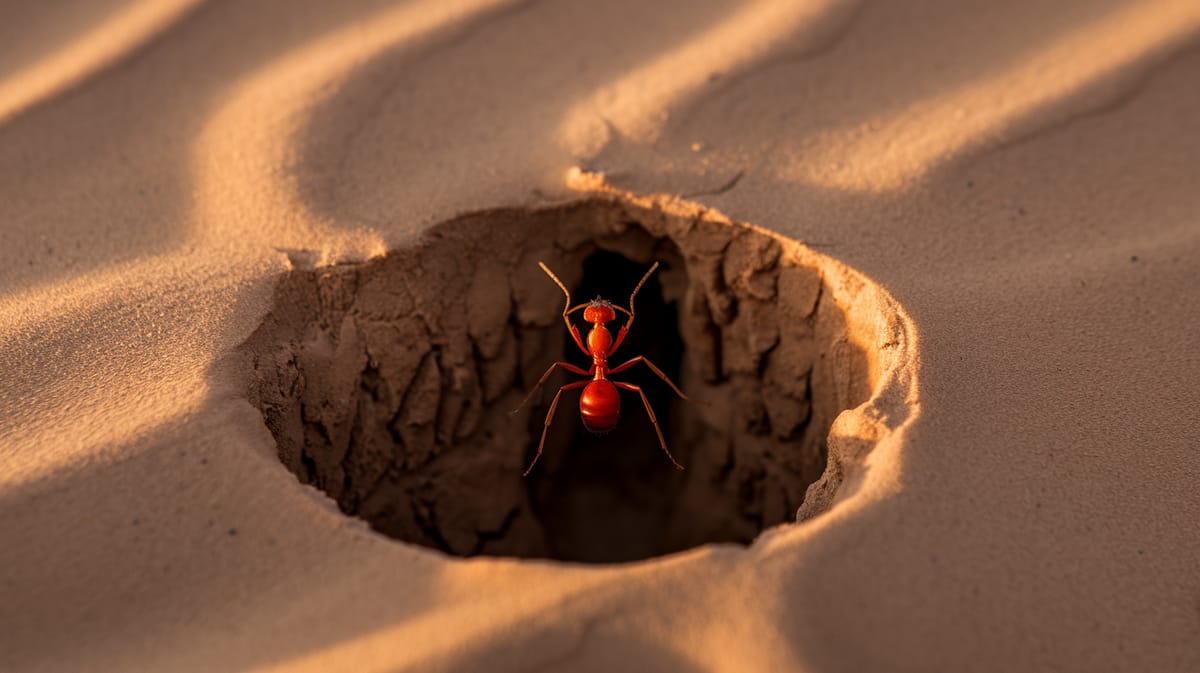Red Ant
Famed for their organized colonies, red ants exhibit remarkable teamwork and resourcefulness. Essential to ecosystems, they aerate soil and control pest populations through their complex social structures.

Key Insights at a Glance
Did You Know?
Taxonomy & Classification
Red ants are aggressive defenders of their colonies, equipped with potent stingers and a complex social structure, reflecting their evolutionary success in diverse ecosystems. Let's understand the evolutionary journey and classification of these remarkable predators and decomposers.
Global Diversity
The genus Solenopsis includes over 200 species, found primarily in tropical and subtropical regions, demonstrating significant adaptability in various environments.
Evolutionary Resilience
Red ants originated about 100 million years ago, evolving effective survival traits that have persisted through significant climatic and geological events.
Lifecycle and Growth
A remarkable journey of transformation from Egg to Adult.
Egg
Tiny, oval eggs are laid by the queen in the nest, serving as the initial stage of the colony's growth.
Larva
Blind and legless, larvae rely on worker ants to feed them, growing rapidly during this stage.
Pupa
Enclosed in a cocoon, pupae undergo metamorphosis, transforming into adults with developing legs and antennae.
Adult
Adult ants emerge with distinct roles: workers, soldiers, or queens, each contributing to colony survival and expansion.
Dietary Habits
A tenacious forager with impressive adaptability, this insect primarily consumes seeds, insects, and utilizes available food sources efficiently.
| DIET TYPE | DESCRIPTION |
|---|---|
| Primary Diet | Primarily feeds on seeds and small insects, gathering them to store for colony sustenance. |
| Secondary Diet | Includes honeydew from aphids and other plant-derived substances, supplementing their primary food sources. |
| Occasional | Occasionally scavenges on dead insects and small animals, making use of available resources opportunistically. |

Behaviour and Adaptations
Discover the fascinating abilities that make the Red Ant a formidable force in its environment.
Efficient Foraging
Red Ants coordinate in large numbers to efficiently gather food.
Complex Communication
Use pheromones to relay messages and organize colony tasks.
Defensive Aggression
Fiercely protect their colony using powerful mandibles and teamwork.
Ecosystem Impact
Red Ants play a crucial role in maintaining ecosystem balance and sustainability.
Soil Aerators
Tunnel through soil, improving its structure and nutrient cycling.
Natural Pest Managers
Prey on insect pests, controlling their populations naturally.
Seed Dispersers
Aid in plant propagation by transporting seeds to new locations.
Conservation Challenges
Addressing significant threats to Red Ant populations and their ecosystems.
Habitat Destruction
Urbanization and deforestation are reducing natural habitats for Red Ants.
Pesticide Use
Pesticides in agriculture lead to population decline in Red Ants.
Climate Change
Altered weather patterns disrupt Red Ant colonies and food sources.
Frequently Asked Questions
How long do Red Ants live?
Red ants, depending on the species and role in the colony, typically live a few weeks to several months. Worker ants have shorter lifespans, whereas queens can live several years, sometimes up to 15 years or more under optimal conditions.
What do Red Ants eat?
Red ants are omnivorous and feed on a variety of substances including seeds, insects, and sugary foods. They are particularly attracted to sweet liquids and will also scavenge for proteins and fats to sustain their colony.
Are Red Ants poisonous?
Red ants are not poisonous, but they can deliver painful bites and stings. Their bites can cause irritation and allergic reactions in some people due to the formic acid they release, but they are not deadly.
Are Red Ants endangered?
Red ants are not endangered. They are commonly found in many regions and are known for their adaptability to various environments. Some species, like the red imported fire ant, are considered invasive and pose ecological challenges.
What do Red Ants symbolize?
Red ants often symbolize diligence, teamwork, and perseverance in various cultures due to their industrious nature and ability to work together effectively in large colonies. They also represent persistence and determination in overcoming obstacles.
Do Red Ants bite?
Yes, red ants can bite and sting. They use their mandibles to bite and then sting with a venomous sting, which can be painful and cause irritation or allergic reactions in some individuals.
What color are Red Ants?
Red ants are typically reddish-brown, but their color can vary slightly depending on the species. This distinctive coloration helps to identify them among other types of ants.
Does a Red Ant have wings?
Red ants generally do not have wings, but reproductive members, known as alates, do. These winged ants emerge during mating seasons to establish new colonies and lose their wings after mating.
What does a Red Ant look like?
Red ants are small, with slender bodies, typically measuring 3 to 9 mm in length. They have a reddish-brown color, segmented bodies, elbowed antennae, and strong mandibles. Their appearance can vary slightly depending on the specific species.
Is a Red Ant an insect?
Yes, a red ant is an insect. It belongs to the family Formicidae within the order Hymenoptera, which also includes bees and wasps. Like all insects, red ants have a three-part body structure, six legs, and a pair of antennae.
Related Insects
Discover insects with similar characteristics to Red Ant - including shared habitats, diets, and taxonomic classifications
Share this profile
Help others discover Red Ant
